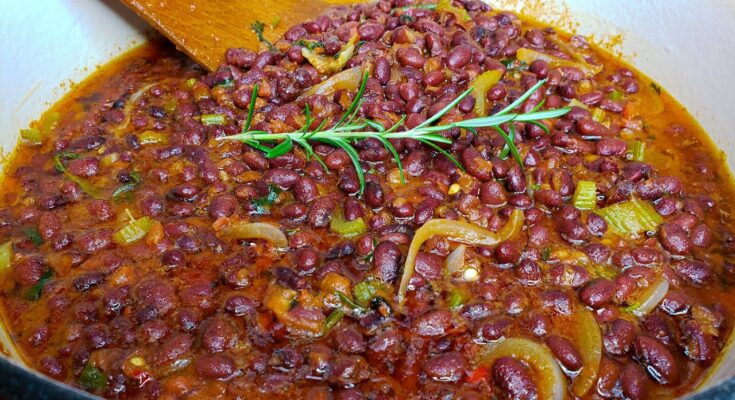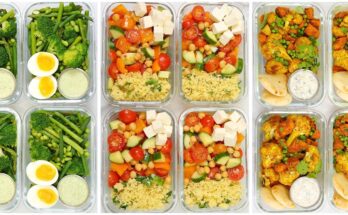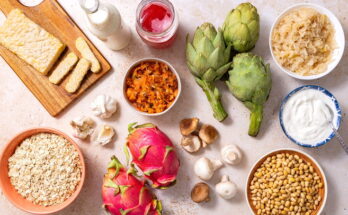Kidney Beans Recipe: Cooking kidney beans is not just about preparing a meal—it’s about creating something wholesome, flavorful, and comforting.
Whether you’re making a hearty Indian-style rajma curry, a Mexican-inspired chili, or a simple salad, kidney beans bring both taste and nutrition to the table.
This guide will walk you through everything you need to know, from ingredients to preparation and cooking, so you can master the art of making kidney beans at home.
Why Kidney Beans Are a Popular Choice
Kidney beans, known for their bright red color and unique shape, are one of the most widely used legumes around the world. From Indian kitchens to Latin American households, they form the backbone of countless comforting recipes. Their mild flavor makes them versatile enough to soak up spices, herbs, and sauces, while their firm texture holds up well in stews, curries, and salads. Unlike other beans that can turn mushy, kidney beans maintain a bite, giving every dish a hearty feel.
Imagine sitting down to a warm bowl of kidney bean curry served with steamed rice—it’s not just a meal, it’s pure comfort food. That’s why kidney beans are loved globally—they’re filling, adaptable, and rich in flavor.
Nutritional Value of Kidney Beans
Kidney beans are a nutritional powerhouse. A single cup of cooked kidney beans provides around 225 calories, 15 grams of protein, and 13 grams of fiber. They are packed with iron, magnesium, potassium, and folate, which are essential for maintaining healthy blood circulation and energy levels.
Protein-rich foods like kidney beans are an excellent choice for vegetarians and vegans who need plant-based protein sources. They are also low in fat, making them suitable for weight management. Additionally, kidney beans have a low glycemic index, which means they help in controlling blood sugar levels, making them diabetic-friendly.
Health Benefits of Eating Kidney Beans
Eating kidney beans regularly brings numerous health benefits. Their high fiber content improves digestion and keeps you full for longer, preventing unnecessary snacking. The iron content supports healthy red blood cell production, while folate helps with brain function and cell regeneration.
Perhaps one of the best-known benefits is their ability to lower cholesterol levels. The soluble fiber in kidney beans binds with cholesterol in the digestive tract, preventing it from being absorbed into the bloodstream. This makes kidney beans a heart-friendly food. Plus, their plant-based protein supports muscle repair and growth, making them perfect for athletes and fitness enthusiasts.
Ingredients You’ll Need
Main Ingredients for the Recipe
To prepare a delicious kidney beans recipe, you’ll need some basic yet flavorful ingredients. These are the essentials you can’t skip:
- Kidney Beans (Rajma) – 1 cup dried or 2 cups canned
- Onions – 2 medium, finely chopped
- Tomatoes – 3 medium, pureed or chopped
- Garlic – 4–5 cloves, minced
- Ginger – 1-inch piece, grated
- Green Chilies – 1 or 2, chopped (optional)
- Cooking Oil or Ghee – 3 tablespoons
- Cumin Seeds – 1 teaspoon
- Coriander Powder – 2 teaspoons
- Turmeric Powder – ½ teaspoon
- Red Chili Powder – 1 teaspoon
- Garam Masala – 1 teaspoon
- Salt – to taste
- Water or Vegetable Stock – 3–4 cups
These ingredients are the heart of the recipe, forming a rich, aromatic base that complements the beans perfectly.
Optional Ingredients for Extra Flavor
If you want to take your recipe to the next level, you can add these extras:
- Bay Leaf – for a subtle earthy flavor
- Cinnamon Stick – for warmth
- Fresh Cream or Yogurt – to make the gravy richer
- Butter – for a creamy finish
- Fresh Coriander Leaves – for garnishing
- Lemon Juice – to balance the flavors with a touch of acidity
Substitutes You Can Use
Don’t have all the ingredients? No problem! You can swap and experiment:
- Use canned kidney beans instead of dried to save time.
- Replace fresh tomatoes with canned tomato puree.
- Use vegetable bouillon cubes if stock is unavailable.
- Substitute garam masala with allspice or curry powder if needed.
The beauty of kidney bean recipes lies in their flexibility—you can adapt them based on what’s available in your pantry.
Preparing Kidney Beans Before Cooking
How to Soak Kidney Beans Properly
Dried kidney beans need proper soaking before cooking. This step is crucial not just for texture but also for digestion. Place 1 cup of dried beans in a large bowl and cover them with 4 cups of water. Let them soak overnight (8–10 hours).
Soaking softens the beans, shortens the cooking time, and helps remove natural toxins like phytohaemagglutinin, which can cause stomach discomfort if beans are undercooked. If you’re short on time, try the quick-soak method: boil the beans for 5 minutes, then let them sit covered for an hour before draining and rinsing.
Boiling Kidney Beans the Right Way
Once soaked, drain and rinse the beans before cooking. Add them to a large pot with fresh water—about 3–4 cups for every cup of beans. Bring to a boil, then reduce to a simmer and cook for 45–60 minutes until tender.
The beans should be soft but not mushy. A simple way to test is by pressing one between your fingers—it should squash easily. If you’re using a pressure cooker or Instant Pot, the cooking time reduces significantly to 20–25 minutes.
Safety Tips When Cooking Kidney Beans
Kidney beans must always be cooked thoroughly. Raw or undercooked beans contain toxins that can lead to food poisoning. Never eat them raw or half-cooked. Always discard the soaking water and cook beans in fresh water to remove harmful substances.
If using canned kidney beans, they are already pre-cooked, so you can skip soaking and boiling. Just rinse them under cold water before adding to your recipe to remove excess salt and preservatives.
Step-by-Step Guide to Cooking Kidney Beans Recipe
Step 1 – Preparing the Base (Onions, Garlic, Spices)
Start by heating a little oil or butter in a pot over medium heat. Add finely chopped onions and sauté until they turn golden brown. Next, stir in minced garlic and let it cook for a minute to release its aroma. At this stage, you can also add your spices—such as cumin, coriander, paprika, or chili powder—depending on the flavor profile you want. This base layer is what gives the dish its depth and richness.
Step 2 – Adding Tomatoes and Flavor Enhancers
Once the onions and garlic are fragrant, add chopped fresh tomatoes or canned tomato puree. Stir well and let the mixture cook down until it thickens and the oil starts to separate. To enhance flavor, you can add a pinch of salt, a dash of soy sauce, or even a splash of vinegar for tang. This tomato-spice mix acts as the “sauce” that will coat the beans.
Step 3 – Cooking the Kidney Beans with the Base
Add your cooked kidney beans (or canned beans if you prefer a quick version) into the pot with the tomato base. Stir well so that the beans are fully coated with the sauce. If using dried beans, make sure they’re soaked overnight and boiled until tender before adding. This ensures they cook evenly and safely.
Step 4 – Simmering for Perfect Taste
Pour in some water or vegetable stock to create a rich, hearty consistency. Lower the heat and let the beans simmer gently for 15–20 minutes, stirring occasionally. This slow cooking allows the beans to soak up all the flavors from the spices and tomatoes. Taste as you go, adjusting salt, pepper, or spices as needed.
Step 5 – Garnishing and Serving
Once the beans are cooked to perfection, turn off the heat and let them rest for a couple of minutes. Garnish with fresh herbs like cilantro, parsley, or even a squeeze of lime juice to brighten the flavors. Serve hot with rice, flatbread, or enjoy it as a stand-alone hearty stew.
Serving Suggestions for Kidney Beans Recipe
Pairing Kidney Beans with Rice
Kidney beans and rice are a classic combination loved across the world. In India, rajma chawal (kidney beans curry with rice) is considered the ultimate comfort food. The soft rice soaks up the rich, spicy bean curry, making it a filling and wholesome meal.
For an aromatic twist, pair kidney beans with basmati rice cooked with whole spices like cardamom, cloves, and cinnamon. If you’re feeling adventurous, try lemon rice or coconut rice to add new dimensions of flavor.
If you’re health-conscious, you can swap white rice for brown rice or quinoa. These alternatives add extra fiber and nutrients, making your meal even more balanced. The beauty of kidney beans is that they complement almost any grain, allowing you to customize based on preference and dietary needs.
Serving with Flatbread or Roti
While rice is the traditional favorite, kidney beans also go amazingly well with flatbreads. Freshly made chapati, paratha, or naan can scoop up the curry, creating a wholesome and comforting bite.
If you want something heartier, serve kidney beans with stuffed parathas or even garlic naan for a restaurant-style feel. For those experimenting with different cuisines, try pairing kidney beans with tortillas, pita bread, or even sourdough bread—it’s fusion food at its finest!
Flatbreads not only balance the flavors but also make the meal more filling. They’re also great if you’re trying to cut back on rice or prefer a lighter carb option.
Using Kidney Beans as a Side Dish
Kidney beans don’t always have to be the main star of the meal. They also work beautifully as a side dish. For instance, you can prepare a mildly spiced version and serve it alongside grilled chicken, roasted vegetables, or even fish.
In Western cuisines, kidney beans are often added to chili, stews, or casseroles, making them a hearty addition rather than the centerpiece. In salads, lightly seasoned kidney beans add protein and texture, making them perfect for lunch bowls or light dinners.
Whether as a curry, salad, or stew, kidney beans have a way of enhancing every dish they touch. They’re versatile, satisfying, and bring balance to a variety of meals.
Variations of Kidney Beans Recipe
Spicy Indian Rajma Curry
If there’s one kidney bean recipe that has stood the test of time, it’s the famous Indian rajma curry. This dish is a staple in North Indian households, often enjoyed with steamed rice, also known as rajma chawal.
The preparation involves slow-cooking kidney beans with onions, tomatoes, ginger, garlic, and a blend of aromatic spices such as cumin, coriander, turmeric, and garam masala. The curry is simmered until it reaches a thick, creamy consistency that clings beautifully to rice or bread.
What sets rajma curry apart is its depth of flavor. The spices are not overwhelming but perfectly balanced to bring warmth and comfort. Many families add a spoonful of ghee (clarified butter) or cream at the end for extra richness.
Rajma curry is not just food—it’s an emotion for many Indians, reminding them of home-cooked meals and Sunday lunches. If you’ve never tried it before, this recipe is the perfect place to start exploring Indian comfort food.
Mexican-Style Kidney Beans
Kidney beans are also a cornerstone of Mexican cuisine. They are a key ingredient in chili con carne, burritos, tacos, and even quesadillas. Mexican-style kidney beans are typically cooked with onions, bell peppers, garlic, and tomatoes, seasoned with chili powder, cumin, oregano, and sometimes smoked paprika for a deep, earthy flavor.
These beans can be served as a side dish with grilled meats, used as a filling for tacos, or layered inside a burrito with rice, cheese, and salsa. For a vegetarian option, you can prepare a hearty chili using just beans, vegetables, and spices—it’s just as satisfying as the meat version.
The vibrant flavors of Mexican spices blend beautifully with the creamy texture of kidney beans, making them a go-to ingredient in countless Latin American households.
Kidney Bean Salad Recipe
For those who prefer something lighter, kidney beans can be transformed into a refreshing salad. All you need are cooked kidney beans, diced cucumbers, tomatoes, onions, and bell peppers. Toss them together with olive oil, lemon juice, salt, pepper, and fresh herbs like parsley or cilantro.
This salad is protein-packed, refreshing, and can be eaten as a light lunch or served as a side dish. You can also add boiled eggs, avocado, or feta cheese to make it more filling.
Kidney bean salad is a great option for meal prepping as it stays fresh in the fridge for a couple of days. It’s perfect for summer days when you want something healthy, cooling, and satisfying without spending hours in the kitchen.
Tips for Perfect Kidney Beans Recipe
Common Mistakes to Avoid
Even though kidney beans are easy to cook, there are some mistakes that can ruin the dish. Let’s go over the most common ones:
- Not soaking beans properly – Skipping this step makes beans harder to digest and increases cooking time.
- Undercooking beans – Kidney beans must be fully cooked to remove natural toxins. Undercooked beans can cause stomach issues.
- Adding salt too early – Salt can make beans tough if added before they are fully cooked. Add it towards the end for best results.
- Not simmering long enough – The longer you let the curry simmer, the more flavorful it becomes. Rushing this process can leave the dish bland.
- Overpowering spices – Too much chili or garam masala can overshadow the natural flavor of the beans. Balance is key.
Avoiding these mistakes ensures your kidney beans recipe turns out perfect every time.
Cooking Hacks for Busy People
If you love kidney beans but don’t always have the time, here are some hacks that can make life easier:
- Use canned kidney beans – They are pre-cooked and save hours of soaking and boiling.
- Cook in bulk – Make a large batch of boiled beans and freeze in portions. This way, you can whip up curries, salads, or wraps quickly.
- Instant Pot or Pressure Cooker – Cuts cooking time drastically while keeping the beans soft and flavorful.
- Pre-made masala paste – Blend onions, tomatoes, and spices into a paste and freeze it. Use whenever you need to cook a quick curry.
- One-pot meals – Add rice, vegetables, and beans into a single pot with spices for a quick and filling dish.
These shortcuts allow you to enjoy the taste and nutrition of kidney beans even on the busiest of days.
Storage and Reheating Tips
Kidney beans are one of those dishes that taste even better the next day as the flavors develop further. Here’s how you can store them properly:
- In the fridge: Store cooked kidney beans or curry in an airtight container for up to 3–4 days.
- In the freezer: Freeze boiled beans or curry in freezer-safe bags for up to 2 months. Thaw overnight before reheating.
- Reheating: Warm kidney beans on the stove over medium heat, adding a splash of water if the curry looks too thick. You can also microwave them in a covered dish.
Avoid reheating multiple times, as it can affect the taste and texture. Always take out only what you need to keep the rest fresh for longer.
FAQs about Kidney Beans Recipe
1. Do you have to soak kidney beans before cooking?
Yes, soaking is essential as it reduces cooking time and helps remove natural toxins from the beans.
2. Can you cook kidney beans in a pressure cooker?
Absolutely. A pressure cooker or Instant Pot can cook soaked beans in just 20–25 minutes.
3. How long do kidney beans last after cooking?
Cooked kidney beans last 3–4 days in the fridge and up to 2 months in the freezer.
4. Can kidney beans be used in salads?
Yes! They’re perfect for protein-packed salads and can be mixed with vegetables, herbs, and dressings.
5. Are kidney beans good for weight loss?
Definitely. Kidney beans are high in fiber and protein, which keep you full for longer and help manage weight.
Conclusion
Kidney beans are more than just an ingredient—they’re a symbol of comfort, health, and versatility. From hearty Indian curries to Mexican chilis and refreshing salads, kidney beans adapt to countless cuisines and flavors. Their nutritional benefits, affordability, and adaptability make them a must-have in every kitchen.
With this step-by-step guide, you now have everything you need to prepare kidney beans perfectly—from soaking and boiling to seasoning and serving. Whether you’re a beginner or an experienced cook, these tips and variations will help you create a dish that’s both delicious and nourishing.
So, the next time you crave something hearty, grab a bag of kidney beans and start cooking. Your taste buds—and your health—will thank you!



